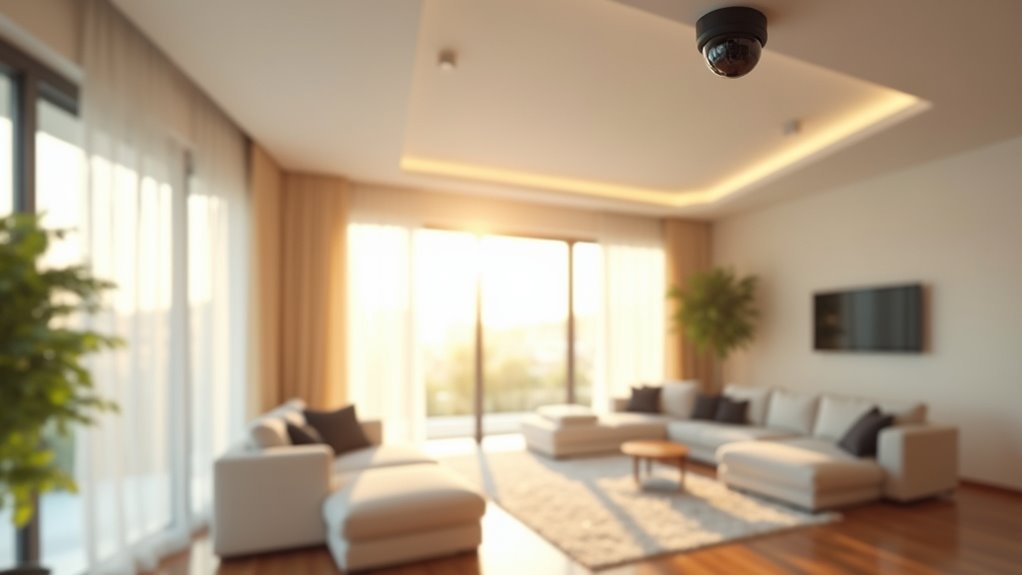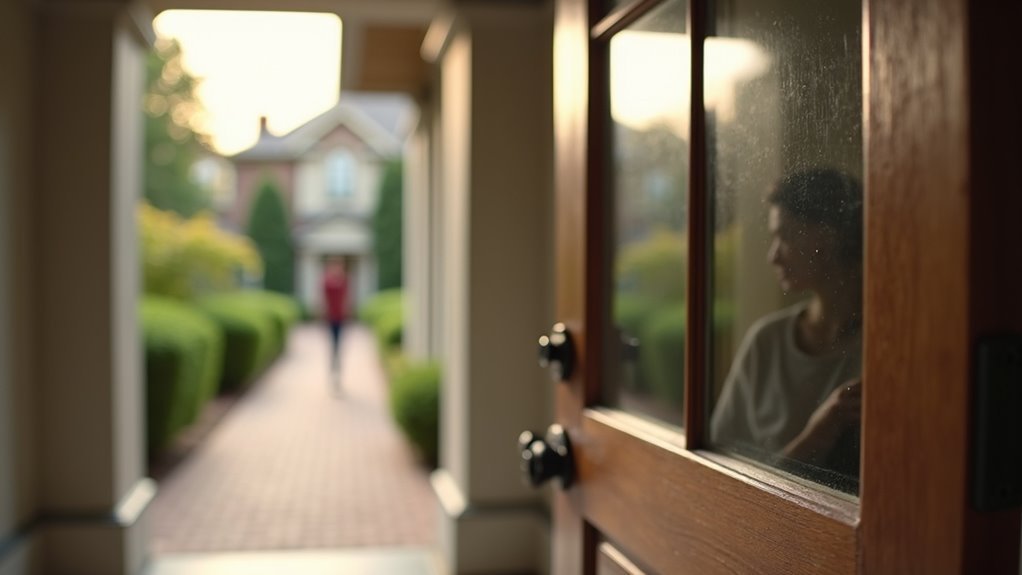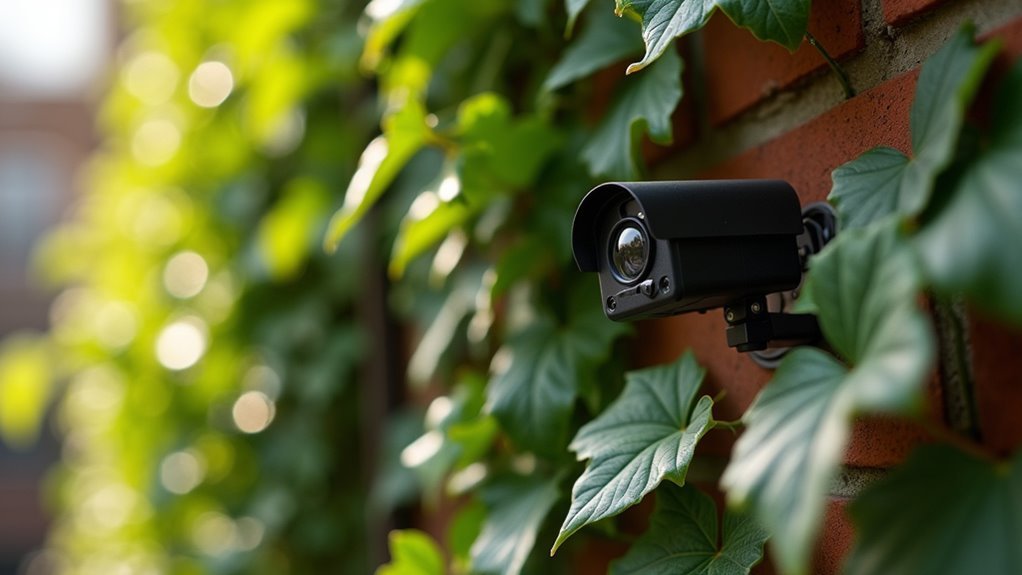You’ve invested in your home, but are you truly protecting it? Hidden cameras offer a discreet security solution that doesn’t scream “surveillance system” to potential intruders. However, installing them effectively requires more than simply placing a camera and hoping for the best. Strategic positioning, proper concealment, and understanding legal boundaries can make the difference between a security system that works and one that fails when you need it most.
Choose the Right Hidden Camera for Your Security Needs

When selecting a hidden camera for your home security system, you’ll need to balance functionality with concealment to maximize both effectiveness and discretion.
Prioritize home security cameras with HD video resolution—1080p or 4K—ensuring clear footage for reliable surveillance. Choose wireless cameras with battery power for easier installation and reduced detection risks since there’s no visible wiring required.
Essential features include night vision capabilities for low-light monitoring and motion detection to optimize storage while capturing significant events.
Consider models with two-way audio if you want communication functionality with monitored individuals.
Your security needs will determine the ideal balance between advanced features and effective concealment.
Focus on cameras that deliver professional-grade surveillance while remaining virtually invisible in your home environment.
Select Strategic Indoor and Outdoor Placement Locations
Strategic placement determines whether your hidden cameras provide extensive security coverage or create blind spots that compromise your home’s protection.
Proper camera positioning is the difference between comprehensive home security and dangerous surveillance gaps that leave your property vulnerable.
You’ll want to position cameras at entry points like front and back doors to capture potential intruders. For indoor cameras, focus on high-traffic areas such as living rooms and hallways to effectively monitor activities.
Consider these strategic locations to conceal cameras while maintaining effective monitoring:
- Blend with nature outdoors – Position cameras in trees or decorative birdhouses for natural camouflage
- Utilize existing décor indoors – Hide cameras among books, picture frames, or decorative shelving units
- Protect from weather – Install outdoor surveillance equipment under eaves or soffits for durability
Smart camera placement guarantees thorough coverage while keeping your security system discreet and functional.
Master Camouflage Techniques Using Everyday Objects

How can you make security cameras virtually invisible to intruders while maintaining crystal-clear surveillance footage? You’ll master camouflage by strategically concealing compact cameras within everyday objects throughout your home.
Transform decorative clocks, tissue boxes, or books into surveillance tools that blend seamlessly with your décor for discreet monitoring. Position hidden cameras among potted plants’ foliage to monitor high-traffic areas, ensuring leaves don’t obstruct the lens.
Shelving units provide perfect concealment—place cameras between picture frames or knick-knacks while maintaining wide viewing angles. Light fixtures offer excellent hiding spots, but verify the lens isn’t blocked by shades or frosted glass for ideal visibility.
Storage boxes and baskets work exceptionally well for practical concealment. Simply create small holes or gaps for the camera lens while keeping your surveillance equipment secure and unnoticed.
Ensure Proper Wi-Fi Connectivity and Power Solutions
After perfectly concealing your cameras within everyday objects, you’ll need robust connectivity and reliable power to guarantee they function flawlessly when you need them most.
Position your hidden cameras within 30 feet of your router to maintain a strong Wi-Fi connection. When this isn’t possible, deploy Wi-Fi extenders or mesh networks to boost signal strength in critical areas, ensuring reliable connectivity throughout your property.
For power solutions that enable uninterrupted surveillance, consider these options:
- Battery-powered security cameras with extended battery life that reduce maintenance frequency
- Solar-powered cameras that harness renewable energy for continuous operation without battery replacements
- Hybrid systems combining both battery backup and solar charging for maximum reliability
Don’t forget regular firmware updates—they strengthen security features and improve connectivity stability, keeping your surveillance system operating at peak performance.
Understand Legal Requirements for Hidden Camera Installation

While technical setup forms the foundation of effective surveillance, operating hidden cameras requires strict adherence to privacy laws that vary greatly by location. You can legally install hidden cameras in areas without reasonable expectation of privacy, like living rooms and entryways.
However, you must avoid private areas such as bathrooms and bedrooms to prevent legal repercussions. Audio recording laws differ markedly between states, with some requiring one-party consent while others mandate two-party consent.
In a workplace setting, you’ll likely need to disclose surveillance activities to comply with local laws. Before installation, research your jurisdiction’s specific legal requirements regarding consent and surveillance to guarantee full compliance and avoid potential privacy violations.
Frequently Asked Questions
Can a Cell Phone Really Detect a Hidden Camera?
Yes, you can detect hidden cameras with your phone’s camera by scanning for infrared light emissions that appear as purplish-pink glows, especially in darkened rooms where they’re more visible.
What States Are Illegal to Have Hidden Cameras?
You’ll find that no states completely ban hidden cameras, but California, Florida, and Illinois have strict laws requiring all-party consent for audio recording. Always check your state’s specific privacy laws.
How Do You Detect if a Hidden Camera Is Watching You?
You can detect hidden cameras by darkening rooms and scanning with your smartphone camera for infrared reflections, checking for unusual objects, conducting physical inspections, and using RF detectors to identify wireless signals.
How Do I Protect Myself From Hidden Cameras?
You can protect yourself by regularly scanning rooms with your smartphone camera, checking for unfamiliar objects, using signal-blocking devices, learning local surveillance laws, and keeping private spaces camera-free.





Leave a Reply